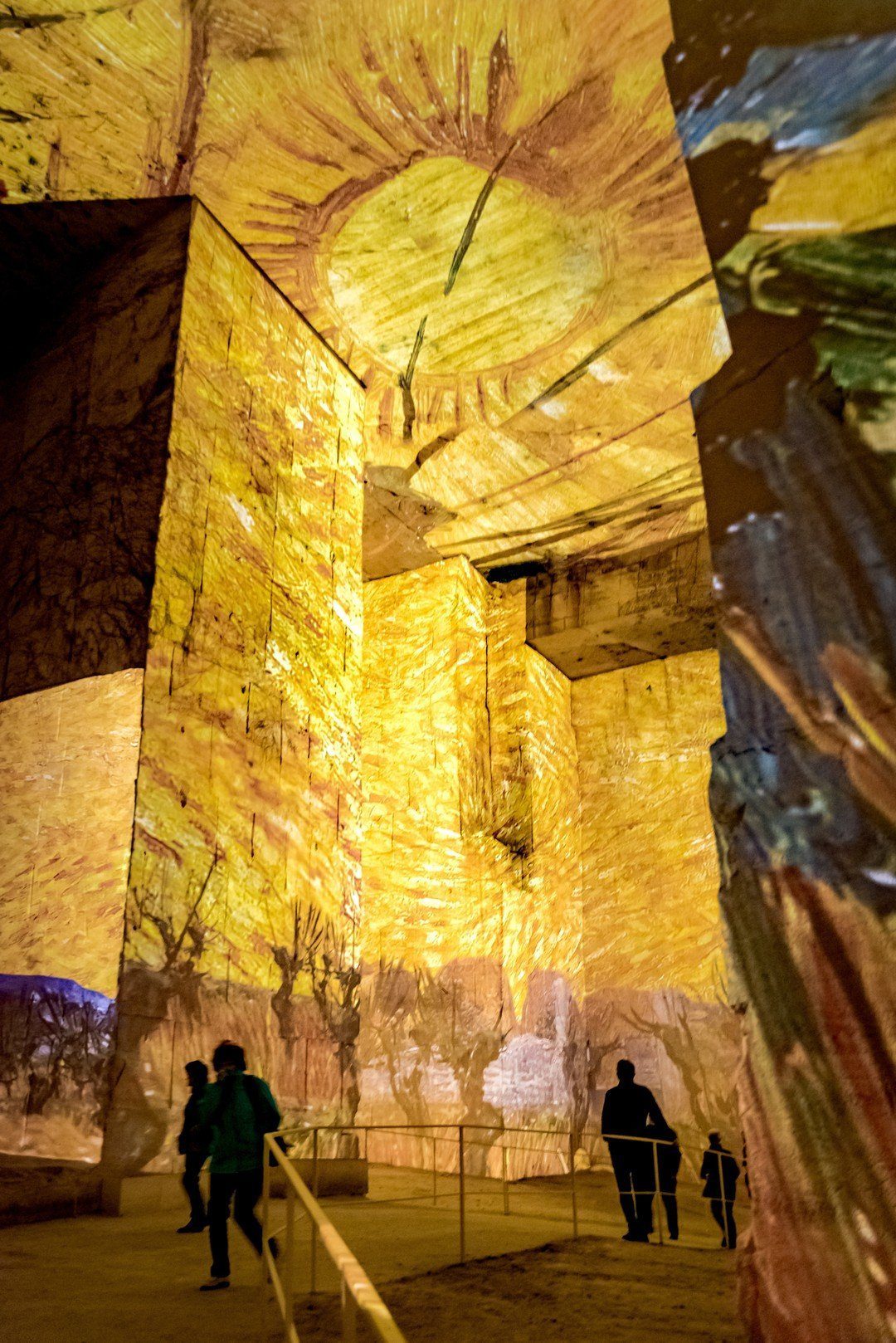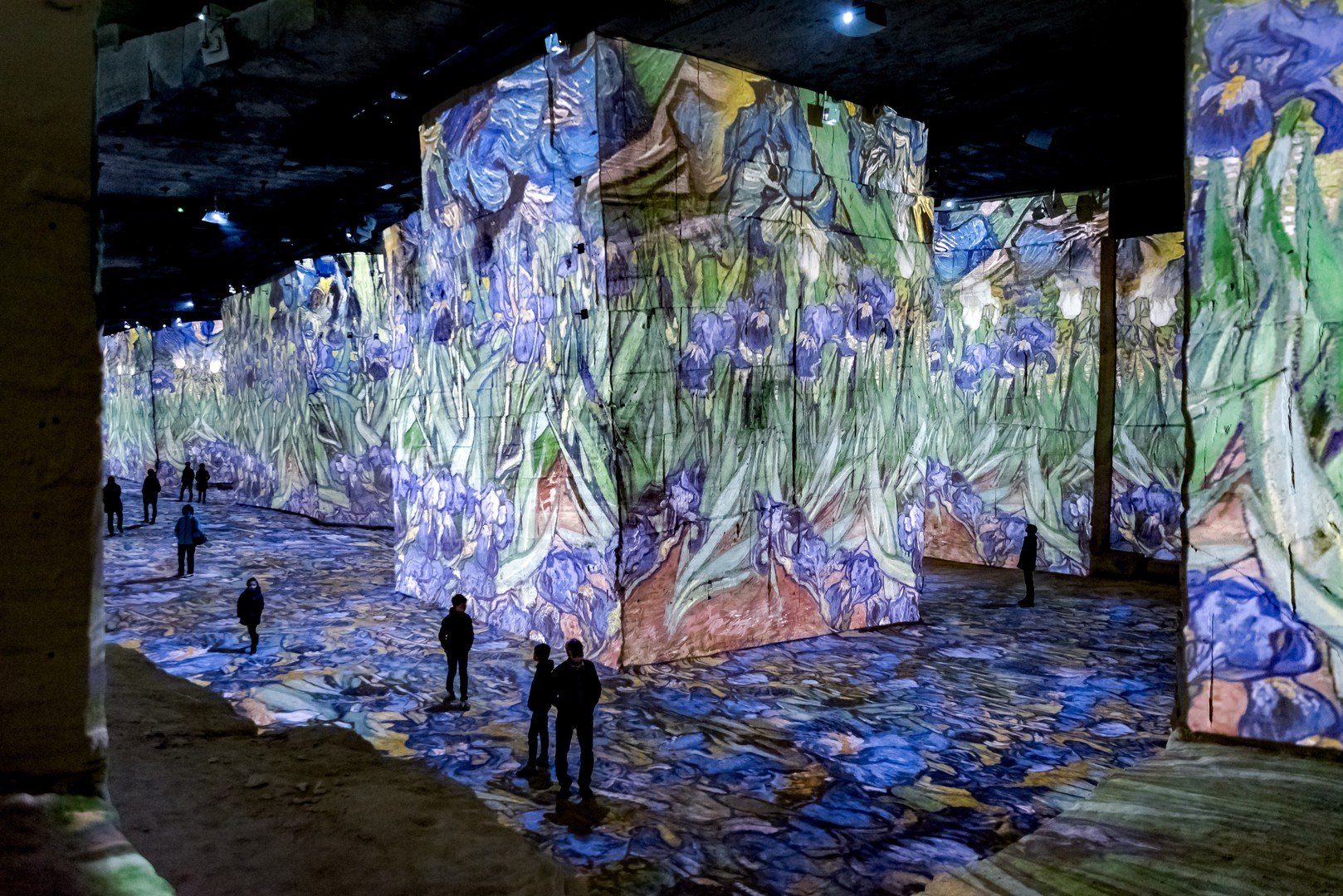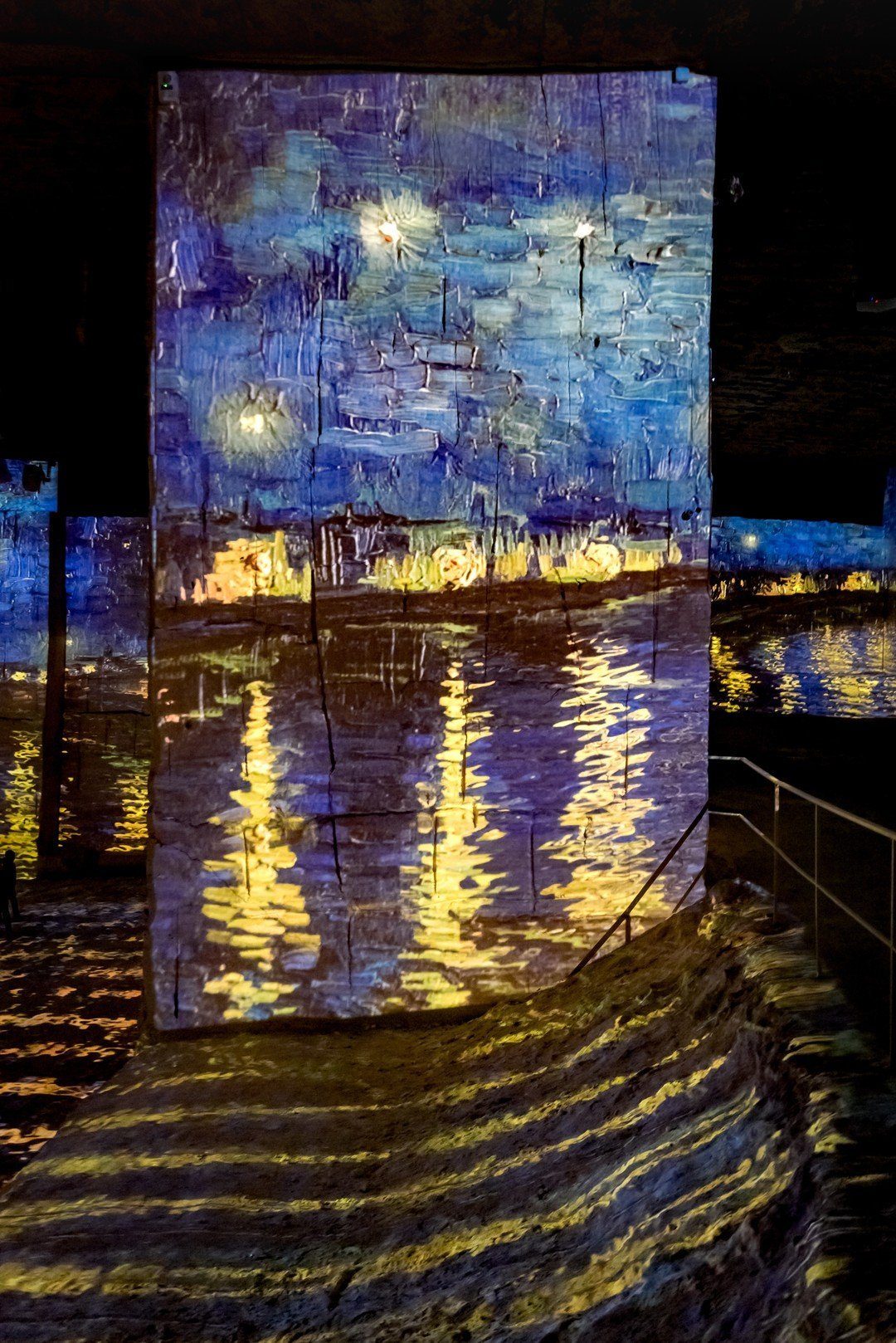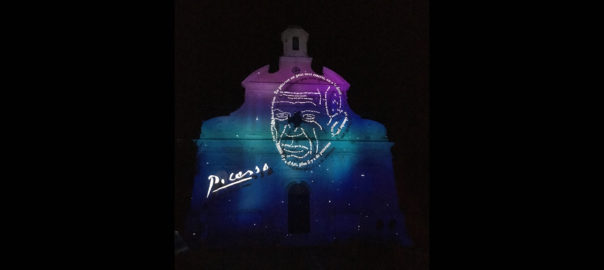AMIEX® by Culturespaces
Content Production: Gianfranco Iannuzzi, Renato Gatto, Massimiliano Siccardi
Music: Luca Longobardi
Photos: © Culturespaces / E.Spiller
The Carrières de Lumières upgrade with Modulo Pi’s media servers
Opened in 2012 by Culturespaces, the digital art center seized the opportunity of its annual closure to update its AV system with Modulo Kinetic, the all-in-one media server solution by Modulo Pi. To answer the needs of this uncommon 7.000 sqm venue, 28 x Modulo Kinetic were installed.
Long before the opening of the Atelier des Lumières in Paris in April 2018, Culturespaces created and tested its AMIEX® exhibitions (Art & Music Immersive Experience) in 2012 in Les Baux-de-Provence, South of France.
In a former quarry of white limestone, the company launched its first digital exhibitions and highlighted the artwork of world-famous painters such as Gauguin, Monet, or more recently Klimt. Exhibitions offer an immersion into artists’ artwork through unique shows combining music and art pieces’ images projected in the quarry’s spectacular scenery.
Every year, the Carrières de Lumières close doors for several weeks. During that period, the venue undertakes the full maintenance of its AV system, including 97 Barco video-projectors, as well as Nexo speakers. That period is also used for programming the new exhibitions of the upcoming season.
Sébastien Chapuis, Technical Director at the Carrières de Lumières, explains: “The humidity rate within the quarry reaches up to 99%. Combined with dust, it creates a thin layer covering the projectors’ lenses, entering fans,… So once a year, all systems are dismantled and undergo a thorough cleaning.”
During their 2019 annual closure, The Carrières de Lumières updated their AV system with Modulo Kinetic, the media server solution by Modulo Pi which is now at the heart of each AMIEX® venue (Atelier des Lumières in France, Bunker de Lumières in South Korea).
The integration of the 28 x Modulo Kinetic media servers and the encoding of the 2019 immersive exhibitions added to the delicate annual maintenance work.
“Installing the systems was easy. Those are big networked servers,” says Sébastien Chapuis. “However, due to the one-month period dedicated to maintaining the rest of the AV system, we had little time left to do the warping process on a new software. The whole team quickly got familiar with Modulo Kinetic and made this new device its own.”
In order to successfully integrate Modulo Kinetic in a shortened time frame, teams of the Carrières de Lumières started working with the system beforehand.
Even before the Modulo Pi’s media servers were physically installed, the study and simulation phase for the new exhibitions was made directly in Modulo Kinetic Designer, the workstation dedicated to Modulo Kinetic’s software. “We 3D scanned the quarry and ended up with a point cloud. It was simplified and then imported into Modulo Kinetic,” explains Sébastien Chapuis. “Thanks to this 3D model, we could anticipate and work on warping directly in 3D.”
Being especially complex in the natural environment of the quarry, the warping process was easily managed thanks to Modulo Kinetic and its advanced features such as the XMap function: “Nothing is straight in here. We have volumes from 6 to 25 meters high with many imperfections on each screen” comments Sébastien Chapuis. “To achieve a great mapping, one needs a great tool. Working with the XMap function was very useful, especially for the most distorted screens.”
Thanks to the preparatory work made in Modulo Kinetic, the on-site warping phase was significantly reduced: “After the 97 x video-projectors were maintained and re-installed, we realized that the media positioning and warping was already pretty good. The 3D simulation and pre-warping in Modulo Kinetic made it possible. The other big advantage is that several members of the team can work simultaneously on the warping in Modulo Kinetic. It helped us save a great amount of time” adds Sébastien Chapuis.
In addition, teams of the Carrières de Lumières took advantage of Modulo Kinetic’s show control capabilities to simplify their control room. All video-projectors are now remotely controlled through Modulo Kinetic: “Everything is included within the same software which is very convenient. That way, we don’t have to deal with a bunch of interfaces that need to communicate” notes Sébastien Chapuis.
A series of control panels was created in Modulo Kinetic to easily power on, power off, and control the video-projectors brightness.
Moreover, teams of the Carrières de Lumières used the GraphEditor panel embedded in Modulo Kinetic to automate the sequences of shows, and times between shows.
Sébastien Chapuis gives further details: “We are running two exhibition programs and have different opening hours over the year. In Modulo Kinetic’s UI Designer, we could create custom panels to easily deal with that: we can automatically sequence shows, calculate the time of lights between them, and add other show programs – such as retrospectives – on demand.”
The Carrières de Lumières reopened on March 1 with two new exhibitions: Van Gogh Starry Night, and Dreamed Japan, Images of the Floating World. With record attendance since its reopening, the control room newly equipped with Modulo Kinetic runs smoothly: “Modulo Kinetic is a very reliable system. Since we reopened the venue to the public, we didn’t experience any glitch” concludes Sébastien Chapuis.


























